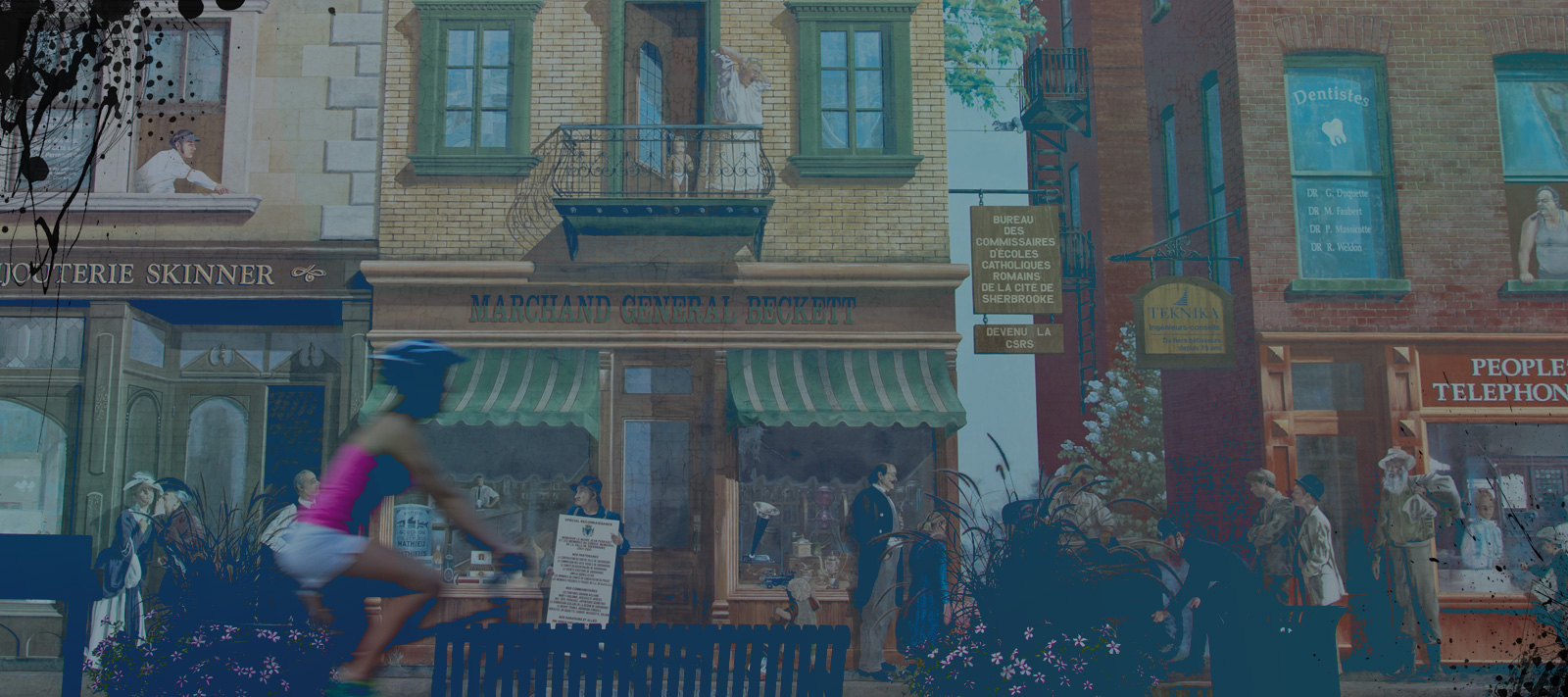-
Murales SherbrookeUne galerie d'art
à ciel ouvert!

Destinées et origines - EN
Destinies and Origins
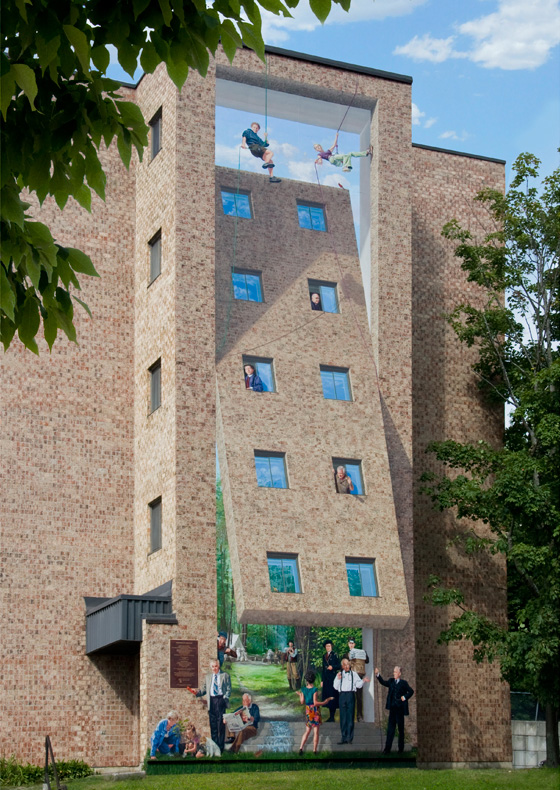
During the 10th anniversary of Sherbrooke’s murals, the public was invited to nominate the “mural citizen of 2012.” The winner was Albert Leblanc, creator and cofounder of Université de Sherbrooke, who was selected from among more than 90 nominations.
Dimensions : 20 by 52 feet
Year created: 2012
the mural in more detail ...
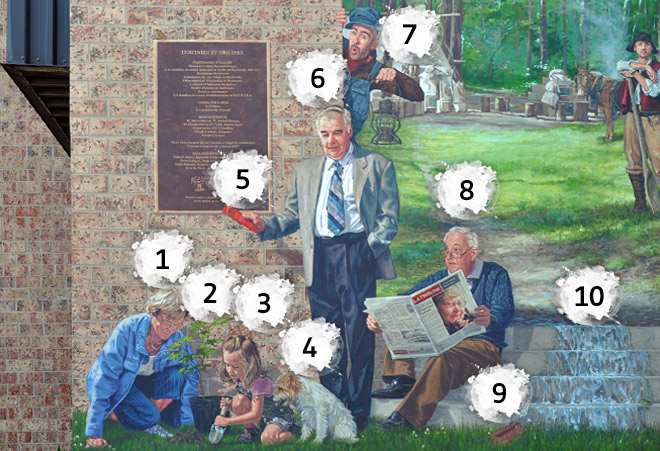 1
Myrielle «Mimi» Lacroix-Arcand
(Born in Sherbrooke on November 26, 1935 – deceased on June 17th, 2010) Lacroix-Arcand began to be socially involved in the early 1970s, and rapidly became a pioneer in the community. She was the creator of ASSAUT, an organization dedicated to upholding the rights of social assistance recipients, in addition to sitting on the Creation Committee for Sherbrooke’s first CLSC (today CLSC Gaston-Lessard) and on the team of Quebec’s first housing co-op, the Coopérative du possible. She also joined forces with like-minded individuals to buy a house designed by and for people with disabilities in order to maximize their autonomy. This first initiative of its kind in Quebec paved the way for the home services provided by the CLSCs and CRSSs today. This national pioneer and resident of the Parc-Racine neighbourhood always worked on a volunteer basis.
2
Small Tree
This small maple tree was planted on the premises of the Office municipal d’habitation de Sherbrooke in memory of Richard Bérubé, a former M.U.R.I.R.S member who passed away in May of 2012.
3
Blanche Malenfant
This extra is the daughter of Bernard Malenfant, founder of the Astrolab du Mont-Mégantic, and of Hélène Philibert. The young lady is envisioned planting a small sugar maple as a symbol of our ancestors’ past, as well as future generations—Sherbrooke’s genealogical tree.
4
Sax the dog
Sax is a “Jack Russell,” the pup of Jazz, a dog well known to the neighbourhood. Jazz belonged to “Mimi,” i.e., Myrielle Lacroix-Arcand.
5
Flyer
...
6
Father Desève Cormier
...
7
Railway Employee
Extra Patrick Couture. The railway employee is holding a lantern from the Grand Trunk Railroad. The railway connecting Montreal and Portland reached Sherbrooke in 1852. The Atlantic and St-Lawrence Railroad co. was inaugurated in 1853. The station (Dépôt St.) was built in 1890 by the Grand Trunk Railroad after it absorbed the Atlantic and St-Lawrence Railroad co. GTR also acquired the land for the station’s operations, as well as locomotives and tracks, from the BALC. A map dating to 1881 has shown the key role that trains played in Sherbrooke history along the modern-day Grande Fourches St. South. The lamp reproduced here is an original GTR lamp supplied by the antique dealer Claude Couture.
8
Rock Guertin
(Born in 1926 – deceased in Sherbrooke in April of 2008)
1
Myrielle «Mimi» Lacroix-Arcand
(Born in Sherbrooke on November 26, 1935 – deceased on June 17th, 2010) Lacroix-Arcand began to be socially involved in the early 1970s, and rapidly became a pioneer in the community. She was the creator of ASSAUT, an organization dedicated to upholding the rights of social assistance recipients, in addition to sitting on the Creation Committee for Sherbrooke’s first CLSC (today CLSC Gaston-Lessard) and on the team of Quebec’s first housing co-op, the Coopérative du possible. She also joined forces with like-minded individuals to buy a house designed by and for people with disabilities in order to maximize their autonomy. This first initiative of its kind in Quebec paved the way for the home services provided by the CLSCs and CRSSs today. This national pioneer and resident of the Parc-Racine neighbourhood always worked on a volunteer basis.
2
Small Tree
This small maple tree was planted on the premises of the Office municipal d’habitation de Sherbrooke in memory of Richard Bérubé, a former M.U.R.I.R.S member who passed away in May of 2012.
3
Blanche Malenfant
This extra is the daughter of Bernard Malenfant, founder of the Astrolab du Mont-Mégantic, and of Hélène Philibert. The young lady is envisioned planting a small sugar maple as a symbol of our ancestors’ past, as well as future generations—Sherbrooke’s genealogical tree.
4
Sax the dog
Sax is a “Jack Russell,” the pup of Jazz, a dog well known to the neighbourhood. Jazz belonged to “Mimi,” i.e., Myrielle Lacroix-Arcand.
5
Flyer
...
6
Father Desève Cormier
...
7
Railway Employee
Extra Patrick Couture. The railway employee is holding a lantern from the Grand Trunk Railroad. The railway connecting Montreal and Portland reached Sherbrooke in 1852. The Atlantic and St-Lawrence Railroad co. was inaugurated in 1853. The station (Dépôt St.) was built in 1890 by the Grand Trunk Railroad after it absorbed the Atlantic and St-Lawrence Railroad co. GTR also acquired the land for the station’s operations, as well as locomotives and tracks, from the BALC. A map dating to 1881 has shown the key role that trains played in Sherbrooke history along the modern-day Grande Fourches St. South. The lamp reproduced here is an original GTR lamp supplied by the antique dealer Claude Couture.
8
Rock Guertin
(Born in 1926 – deceased in Sherbrooke in April of 2008)
Founder of the Fondation Rock-Guertin, whose chief mission is to distribute food to individuals and families in need a few days before Christmas, in what is known as Le Panier de l’Espoir. In addition to setting up a food bank that also benefits schools and organizations, for more than 25 years, he has been helping the disadvantaged by holding benefit events and helping to train volunteers to be able to offer food support “year-round.” Over almost 30 years, no fewer than 240,000 food baskets have been provided.
9
Beckett Brick
In 1845, the British American Land Company (BALC) was looking to exploit the small stream between the Lac-des-Nations and the Saint-François River. The company’s goal was to build a locked canal to develop a new industrial zone. But the project had to be dropped under the pressure of companies along the Magog River, which feared that the water flow from the lake would no longer be sufficient. The site did, however, reveal an impressive clay deposit on Camirand St., which, from 1845 to 1904, was called Brickyard St. The brickworks were run by George Cuzner, before being taken over by the Beckett family.
10
Cascading Waterfall
Symbolizes the small stream running from the Lac-des-Nations through the modern-day Parc Racine to the St-François River. The Parc Racine is named after Mgr Antoine Racine (first bishop of the Diocese of Sherbrooke) but was previously named Carré Racine. In 1934, the official announcement of the park’s beautification mentioned that the site would be transformed into a garden complete with flowers, plants and bushes as well as a stairway at the corner of Ball and Gillespie Streets. The beautification was undertaken the following year, in 1935. The modern-day pond and its former cascade hark back to this small stream.
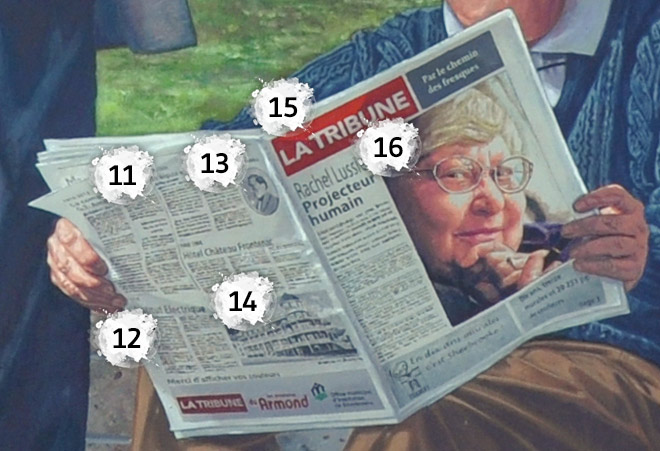 11
G.T. Armstrong
Up until just recently, the building on the corner of Alexandre and Aberdeen bore the name of G. T. Armstrong & Sons. In 1910, G.T. Armstrong was a wholesaler specializing in bagged sugar, peas and beans. In the company’s final years, the building also housed a plumbing and heating business.
12
L’Institut électrique
Several homes in the neighbourhood were repurposed into specialized private hospitals. As controversial as they might be by today’s standards, in their day they were hailed for their technological and scientific progress. In 1927, Laurier St. was home to the Hôpital du cancer de Sherbrooke, which used plasters to treat patient tumours. As of 1916, one of the buildings on Brooks St. housed the Institut électrique. Using 110 volts of high-frequency current, the institute was able to offer X-ray treatments, corona discharges, electric light baths, cataphoresis and “electro-hydrotherapy” baths.
13
Samuel Brooks
(Born in Haverhill, New Hampshire in 1793 – deceased in 1849)
11
G.T. Armstrong
Up until just recently, the building on the corner of Alexandre and Aberdeen bore the name of G. T. Armstrong & Sons. In 1910, G.T. Armstrong was a wholesaler specializing in bagged sugar, peas and beans. In the company’s final years, the building also housed a plumbing and heating business.
12
L’Institut électrique
Several homes in the neighbourhood were repurposed into specialized private hospitals. As controversial as they might be by today’s standards, in their day they were hailed for their technological and scientific progress. In 1927, Laurier St. was home to the Hôpital du cancer de Sherbrooke, which used plasters to treat patient tumours. As of 1916, one of the buildings on Brooks St. housed the Institut électrique. Using 110 volts of high-frequency current, the institute was able to offer X-ray treatments, corona discharges, electric light baths, cataphoresis and “electro-hydrotherapy” baths.
13
Samuel Brooks
(Born in Haverhill, New Hampshire in 1793 – deceased in 1849)
Won Sherbrooke’s by-elections in 1829 and became Sherbrooke’s MP to the Legislative Assembly of Lower Canada. A few months later, he won the general elections together with Goodhue. Brooks was favourable to the establishment of the BALC in the Eastern Townships, and became secretary, before stepping down in 1835. The following year he became the manager of the first City Bank of Montreal. He played a key role in the creation of the St-Laurence & Atlantic Railway—the first railway in Sherbrooke. He was one of the initiators and shareholders of the Saint-Jean-Sherbrooke (1840) and Longueuil-Portland (1852) railway projects. He ran in the elections, getting elected in 1844 and re-elected in 1847 as Sherbrooke MP to the House of Assembly of United Canada.
In 1855 the lot Samuel Brooks had bought near the Carrefour King/Wellington was divided by his heirs, William and Charles Brooks, into 48 building lots. This division, named Brooks Block, led to the creation of Sanborn, Ball, Gordon and Brooks Streets.
14
L’Hôtel Château Frontenac
Here on the site of this 13th Sherbrooke mural once stood the Hôtel Château Frontenac built in 1904 and unfortunately burned down in 1964 during one of the fiercest blazes in the city’s history. The hotel has left a lingering memory, after 60 years of banquets, meetings, performances, weddings and receptions. Its legendary tower and many anecdotes have left a lasting imprint on the community’s memory, and the hotel is still remembered as one of Sherbrooke’s finest.
15
La Tribune Newspaper
La Tribune, founded in 1910 by the lawyer Jacob Nicol, was the city’s first French-language daily newspaper.
16
Rachel Lussier
(Born in Sherbrooke on September 14th, 1945 – deceased on November 5th, 2010) In the late 1960s, Lussier embarked on a most impressive career. A woman of words, she wore many hats as a journalist, host and author. After starting out as a researcher, she became one of Quebec television’s first directors at Télé-7 at the age of 30. From 1986–2003, at the newspaper La Tribune, she wrote her articles with panache and conducted outstanding interviews highlighting regional movers and shakers in arts and culture. She was a contributor to several local literary works and penned all of the texts appearing in the coffee table book Sherbrooke.
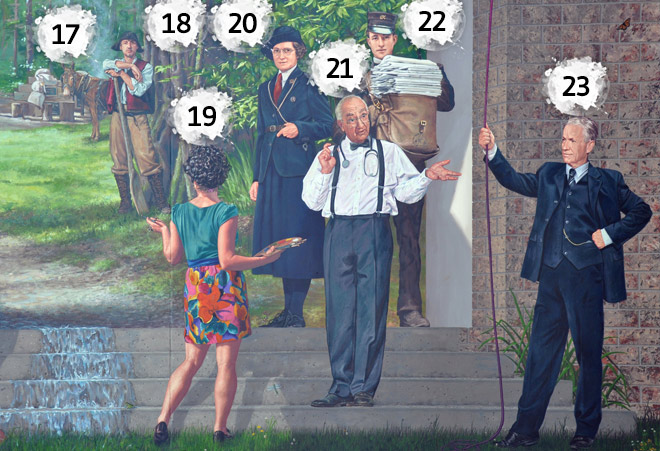 17
A Mule Named “Mathieu”
Toward the end of the 60s at Parc Victoria, when the Zoo de Sherbrooke was still open, children could go on pony and even mule rides. In the summertime, this mule was lodged in the sheds of the ETAA plateau. When he got bored and whinnied, he could be heard a whole kilometre away!
18
Jean-Baptiste Nolin
(Extra Pierre Laforest) In 1795, well before Sherbrooke and even Hyatt’s Mills were founded, Jean-Baptiste Nolin cleared an 18-acre stretch beneath the site of this mural, right by the modern-day King St. West heading toward Lennoxville, named Ascot Township. Little is known about Jean-Baptiste Nolin, who was unmarried and left not a single trace. Where was he from? How old was he? The “French-Canadian” is imagined here as a stalwart man in his prime who had to overcome harsh terrains filled with daunting pine trees, boulders and mountains.
17
A Mule Named “Mathieu”
Toward the end of the 60s at Parc Victoria, when the Zoo de Sherbrooke was still open, children could go on pony and even mule rides. In the summertime, this mule was lodged in the sheds of the ETAA plateau. When he got bored and whinnied, he could be heard a whole kilometre away!
18
Jean-Baptiste Nolin
(Extra Pierre Laforest) In 1795, well before Sherbrooke and even Hyatt’s Mills were founded, Jean-Baptiste Nolin cleared an 18-acre stretch beneath the site of this mural, right by the modern-day King St. West heading toward Lennoxville, named Ascot Township. Little is known about Jean-Baptiste Nolin, who was unmarried and left not a single trace. Where was he from? How old was he? The “French-Canadian” is imagined here as a stalwart man in his prime who had to overcome harsh terrains filled with daunting pine trees, boulders and mountains.
In August of 1799 Nolin took his oath of allegiance, going from his likely status as a labourer or “squatter” to the rank of Township substitute associate. In 1802, Nolin had no share in the conceded lots, and they were acquired by Gilbert Hyatt. Beyond this point nothing is known about Jean-Baptiste Nolin... could he have possibly chased after other adventures? It remains a mystery.
19
Mylène Moliner Roy
This extra is an architecture student who worked as a MURIRS intern to create this 13th mural. Here we see the young painter and muralist at work, fascinated by the early history of Sherbrooke.
20
Blanche-Alice Jarest
(Born in 1902 – deceased in Sherbrooke on March 21st, 1985)
Founder of Estrie’s first guide unit, the “Marguerite-Bourgeoys de Sherbrooke” (first company). In 1935, this experienced teacher accepted the challenge given to her by Father Origène Vel, then chaplain of the Scouts du Diocèse de Sherbrooke, to found the movement’s first all-girl unit. The initial team counted 11 young ladies who took their oath on March 29th, 1939. Blanche-Alice Jarest led the team for five years.
21
Alexandre Migneault
(Born in Montreal on August 3rd, 1899 – deceased in Magog on March 6th, 2000)
Pursued theology studies at the Grand Séminaire de Montréal for three years before renouncing the priesthood for health reasons. Migneault went on to study medicine, specializing in gynecology and obstetrics. As a doctor at the Hôpital St-Vincent-de-Paul, he helped deliver eight thousand babies, including six of his grandchildren, before retiring at 76. After his wife passed away, he came back to theology, and, at almost 90 years of age, was at last ordained priest at the Cathédrale Saint-Michel. This man known for his dedication passed away at the age of 100. Unusually enough, he baptized three of his grandchildren.
22
Édouard-Jean Desruisseaux
(Born in Sandhill [Lennoxville] on December 23rd, 1886 – deceased in June 1952)
Became Sherbrooke’s first French-speaking postmaster in 1945. Mr. Desruisseaux was one of the first mailmen to work for the city’s mail services, inaugurated on September 24th, 1907. He was also justice of the peace for the District de Saint-François, warden for his parish, secretary for the Ligue du Sacré-Cœur and the organizer of many parish events. In 1911, Desruisseaux attended the coronation of England’s King George V and Queen Mary (the grandparents of Elizabeth II) in the capacity of “sergeant” of the Fusiliers de Sherbrooke.
23
Albert Leblanc
(Born in Sherbrooke on May 29th, 1899 – deceased in Sherbrooke on October 30th, 1975)
Mr. Leblanc was named “2012 Mural Citizen” after M.U.R.I.R.S. invited Sherbrooke-area citizens to submit candidates who directly contributed to developing and promoting the community. Mr. Leblanc was the creator of the project that led to Université de Sherbrooke. He was admitted to the Quebec Bar in 1924 and was an eminent lawyer in Sherbrooke, in addition to being president of the bar from 1958–1959. He was also commissioner and president of the Commission scolaire de Sherbrooke, and, working together with brother Théode, created a “13th grade” to prepare students for science studies. He dreamed of a university in Sherbrooke and rallied several prominent figures around his project, including Mgr Cabana, to collectively found the Université de Sherbrooke.
24
Blanche-Alice Jarest
Founder of the Easter Townships’ first Girl Guide unit, the Marguerite-Bourgeoys company. In 1935, this experienced teacher accepted the challenge given to her by Father Origène Vel to initiate a female counterpart of the Scouts du diocese de Sherbrooke. A first team of 11 girls took their oath on March 29th, 1939. Blanche-Alice led the unit for 5 years.
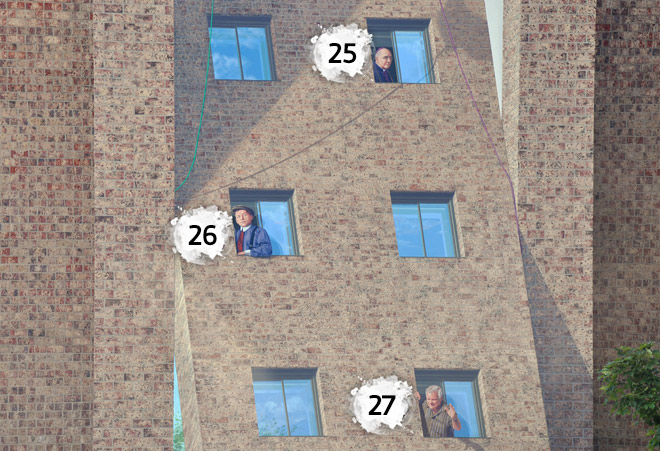 25
Mgr Philippe Desranleau
(Born in Saint-Sébastien d’Iberville in 1882 – deceased in Sherbrooke in 1952)
25
Mgr Philippe Desranleau
(Born in Saint-Sébastien d’Iberville in 1882 – deceased in Sherbrooke in 1952)
Ordained priest in 1909, Desranleau became coadjutor bishop of Sherbrooke in 1937, then bishop in 1941 and archbishop in 1951. His dedication to education and higher education in particular led him to found the Grand Séminaire de Sherbrooke on Murray St. in 1939, the École d’agriculture Noé-Ponton in 1946 (first main building of the Université de Sherbrooke which burned down in 1964), the École supérieure de génie (the university’s first faculty) in 1949, the École normale pour filles in 1942 and the Collège classique pour filles in 1944. Mgr Desranleau worked on creating a university in Sherbrooke together with Frère Théode, Mgr Cabana and the lawyer Albert Leblanc.
26
Amable «Pat» Desrochers
(Born and deceased in Sherbrooke)
This son of Bernard Desrochers, who cleared the Beauvoir area, was a resident of the “Côte des chapelets.” He was the founder of Sherbrooke’s first taxi company, Blue Taxi (circa 1885). His two sons, Alfred and Léopold, worked at his side as fellow taxi drivers for 40 years. In 1908, three athletes from Portland Avenue hired Mr. Desrochers to give them a ride in his Mc Laughling-Buick to a professional boxing match in Boston, Massachusetts. The one-way trip took three days. He died of the Spanish flu, a terrible disease that he was often exposed to as a cab driver.
27
Luc Lamoureux
(Born in Sherbrooke)
Married to Cécile Poisson and the father of three children. A now-retired engineer, Lamoureux was a Sherbrooke city councillor (1970). For 30 years, he was also on the Board of Directors for the Office municipal d’habitation de Sherbrooke or municipal housing bureau, and the manager of the building at 250 Laurier St. where this mural stands today. The modern-day building was erected on the previous site of the legendary Hôtel Château Frontenac.
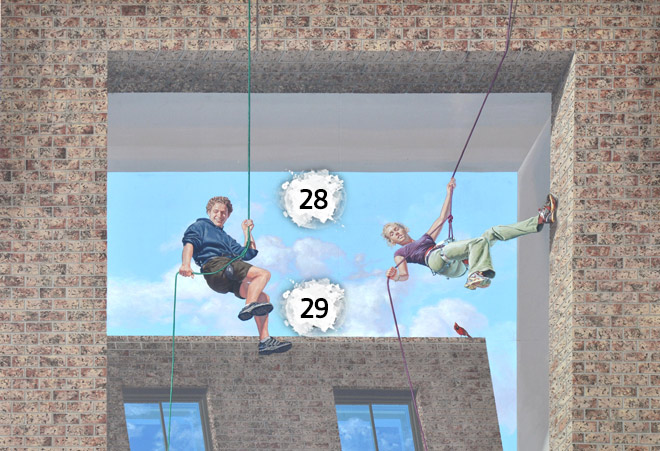 28
Simon et Eva
These two professional mountaineers work at the Centre d’escalade Vertige set up inside the former Église du Christ-Roi on the other side of the mural, at the corner of Aberdeen and Brooks Streets. The mural makes it look as if they are the ones tilting the wall. They also represent the Christ-Roi church.
29
Christ-Roi Parish and Church
The Paroisse du Christ-Roi was founded in April of 1940. The parish’s first resident priest, Father Louis-Léonidas Adam, celebrated its first mass on June 28, 1941. The church was consecrated by Mgr Cabana in 1952. Improvements to the interior were made by artistic painter Zotique Pelland. In 1993, the new parish priest Jean-Paul Fortier and groundskeeper François Fleury began renovating the church and decided to put stained glass in each of its 26 windows, a goal that would only be completed in 2000.
28
Simon et Eva
These two professional mountaineers work at the Centre d’escalade Vertige set up inside the former Église du Christ-Roi on the other side of the mural, at the corner of Aberdeen and Brooks Streets. The mural makes it look as if they are the ones tilting the wall. They also represent the Christ-Roi church.
29
Christ-Roi Parish and Church
The Paroisse du Christ-Roi was founded in April of 1940. The parish’s first resident priest, Father Louis-Léonidas Adam, celebrated its first mass on June 28, 1941. The church was consecrated by Mgr Cabana in 1952. Improvements to the interior were made by artistic painter Zotique Pelland. In 1993, the new parish priest Jean-Paul Fortier and groundskeeper François Fleury began renovating the church and decided to put stained glass in each of its 26 windows, a goal that would only be completed in 2000.
It was closed (like many churches of Quebec) in 2006, and sold in 2009, after which its central space was repurposed into an indoor climbing centre. The Centre d’escalade Vertige is open to amateurs and experts alike. Those who come to the centre can enjoy climbing in the midst of the vestiges of the former church, including its magnificent stained-glass windows.
The church basement is now the home of a dance school, Dixcorpsdanse, and a karate dojo, Karaté-Do Shorinjiryu Shindo. The rectory was converted into a rooming house before accommodating the Centre d’éducation spécialisé & Camp urbain Les Funambules in the spring of 2012. The dissolution decree for the parish was signed in June 2009, and the land was annexed to the Immaculée-conception-de-la-très-sainte-vierge-Marie.

1
Myrielle «Mimi» Lacroix-Arcand
(Born in Sherbrooke on November 26, 1935 – deceased on June 17th, 2010) Lacroix-Arcand began to be socially involved in the early 1970s, and rapidly became a pioneer in the community. She was the creator of ASSAUT, an organization dedicated to upholding the rights of social assistance recipients, in addition to sitting on the Creation Committee for Sherbrooke’s first CLSC (today CLSC Gaston-Lessard) and on the team of Quebec’s first housing co-op, the Coopérative du possible. She also joined forces with like-minded individuals to buy a house designed by and for people with disabilities in order to maximize their autonomy. This first initiative of its kind in Quebec paved the way for the home services provided by the CLSCs and CRSSs today. This national pioneer and resident of the Parc-Racine neighbourhood always worked on a volunteer basis.
2
Small Tree
This small maple tree was planted on the premises of the Office municipal d’habitation de Sherbrooke in memory of Richard Bérubé, a former M.U.R.I.R.S member who passed away in May of 2012.
3
Blanche Malenfant
This extra is the daughter of Bernard Malenfant, founder of the Astrolab du Mont-Mégantic, and of Hélène Philibert. The young lady is envisioned planting a small sugar maple as a symbol of our ancestors’ past, as well as future generations—Sherbrooke’s genealogical tree.
4
Sax the dog
Sax is a “Jack Russell,” the pup of Jazz, a dog well known to the neighbourhood. Jazz belonged to “Mimi,” i.e., Myrielle Lacroix-Arcand.
5
Flyer
...
6
Father Desève Cormier
...
7
Railway Employee
Extra Patrick Couture. The railway employee is holding a lantern from the Grand Trunk Railroad. The railway connecting Montreal and Portland reached Sherbrooke in 1852. The Atlantic and St-Lawrence Railroad co. was inaugurated in 1853. The station (Dépôt St.) was built in 1890 by the Grand Trunk Railroad after it absorbed the Atlantic and St-Lawrence Railroad co. GTR also acquired the land for the station’s operations, as well as locomotives and tracks, from the BALC. A map dating to 1881 has shown the key role that trains played in Sherbrooke history along the modern-day Grande Fourches St. South. The lamp reproduced here is an original GTR lamp supplied by the antique dealer Claude Couture.
8
Rock Guertin
(Born in 1926 – deceased in Sherbrooke in April of 2008)
Founder of the Fondation Rock-Guertin, whose chief mission is to distribute food to individuals and families in need a few days before Christmas, in what is known as Le Panier de l’Espoir. In addition to setting up a food bank that also benefits schools and organizations, for more than 25 years, he has been helping the disadvantaged by holding benefit events and helping to train volunteers to be able to offer food support “year-round.” Over almost 30 years, no fewer than 240,000 food baskets have been provided.
Founder of the Fondation Rock-Guertin, whose chief mission is to distribute food to individuals and families in need a few days before Christmas, in what is known as Le Panier de l’Espoir. In addition to setting up a food bank that also benefits schools and organizations, for more than 25 years, he has been helping the disadvantaged by holding benefit events and helping to train volunteers to be able to offer food support “year-round.” Over almost 30 years, no fewer than 240,000 food baskets have been provided.
9
Beckett Brick
In 1845, the British American Land Company (BALC) was looking to exploit the small stream between the Lac-des-Nations and the Saint-François River. The company’s goal was to build a locked canal to develop a new industrial zone. But the project had to be dropped under the pressure of companies along the Magog River, which feared that the water flow from the lake would no longer be sufficient. The site did, however, reveal an impressive clay deposit on Camirand St., which, from 1845 to 1904, was called Brickyard St. The brickworks were run by George Cuzner, before being taken over by the Beckett family.
10
Cascading Waterfall
Symbolizes the small stream running from the Lac-des-Nations through the modern-day Parc Racine to the St-François River. The Parc Racine is named after Mgr Antoine Racine (first bishop of the Diocese of Sherbrooke) but was previously named Carré Racine. In 1934, the official announcement of the park’s beautification mentioned that the site would be transformed into a garden complete with flowers, plants and bushes as well as a stairway at the corner of Ball and Gillespie Streets. The beautification was undertaken the following year, in 1935. The modern-day pond and its former cascade hark back to this small stream.

11
G.T. Armstrong
Up until just recently, the building on the corner of Alexandre and Aberdeen bore the name of G. T. Armstrong & Sons. In 1910, G.T. Armstrong was a wholesaler specializing in bagged sugar, peas and beans. In the company’s final years, the building also housed a plumbing and heating business.
12
L’Institut électrique
Several homes in the neighbourhood were repurposed into specialized private hospitals. As controversial as they might be by today’s standards, in their day they were hailed for their technological and scientific progress. In 1927, Laurier St. was home to the Hôpital du cancer de Sherbrooke, which used plasters to treat patient tumours. As of 1916, one of the buildings on Brooks St. housed the Institut électrique. Using 110 volts of high-frequency current, the institute was able to offer X-ray treatments, corona discharges, electric light baths, cataphoresis and “electro-hydrotherapy” baths.
13
Samuel Brooks
(Born in Haverhill, New Hampshire in 1793 – deceased in 1849)
Won Sherbrooke’s by-elections in 1829 and became Sherbrooke’s MP to the Legislative Assembly of Lower Canada. A few months later, he won the general elections together with Goodhue. Brooks was favourable to the establishment of the BALC in the Eastern Townships, and became secretary, before stepping down in 1835. The following year he became the manager of the first City Bank of Montreal. He played a key role in the creation of the St-Laurence & Atlantic Railway—the first railway in Sherbrooke. He was one of the initiators and shareholders of the Saint-Jean-Sherbrooke (1840) and Longueuil-Portland (1852) railway projects. He ran in the elections, getting elected in 1844 and re-elected in 1847 as Sherbrooke MP to the House of Assembly of United Canada.
In 1855 the lot Samuel Brooks had bought near the Carrefour King/Wellington was divided by his heirs, William and Charles Brooks, into 48 building lots. This division, named Brooks Block, led to the creation of Sanborn, Ball, Gordon and Brooks Streets.
Won Sherbrooke’s by-elections in 1829 and became Sherbrooke’s MP to the Legislative Assembly of Lower Canada. A few months later, he won the general elections together with Goodhue. Brooks was favourable to the establishment of the BALC in the Eastern Townships, and became secretary, before stepping down in 1835. The following year he became the manager of the first City Bank of Montreal. He played a key role in the creation of the St-Laurence & Atlantic Railway—the first railway in Sherbrooke. He was one of the initiators and shareholders of the Saint-Jean-Sherbrooke (1840) and Longueuil-Portland (1852) railway projects. He ran in the elections, getting elected in 1844 and re-elected in 1847 as Sherbrooke MP to the House of Assembly of United Canada.
In 1855 the lot Samuel Brooks had bought near the Carrefour King/Wellington was divided by his heirs, William and Charles Brooks, into 48 building lots. This division, named Brooks Block, led to the creation of Sanborn, Ball, Gordon and Brooks Streets.
14
L’Hôtel Château Frontenac
Here on the site of this 13th Sherbrooke mural once stood the Hôtel Château Frontenac built in 1904 and unfortunately burned down in 1964 during one of the fiercest blazes in the city’s history. The hotel has left a lingering memory, after 60 years of banquets, meetings, performances, weddings and receptions. Its legendary tower and many anecdotes have left a lasting imprint on the community’s memory, and the hotel is still remembered as one of Sherbrooke’s finest.
15
La Tribune Newspaper
La Tribune, founded in 1910 by the lawyer Jacob Nicol, was the city’s first French-language daily newspaper.
16
Rachel Lussier
(Born in Sherbrooke on September 14th, 1945 – deceased on November 5th, 2010) In the late 1960s, Lussier embarked on a most impressive career. A woman of words, she wore many hats as a journalist, host and author. After starting out as a researcher, she became one of Quebec television’s first directors at Télé-7 at the age of 30. From 1986–2003, at the newspaper La Tribune, she wrote her articles with panache and conducted outstanding interviews highlighting regional movers and shakers in arts and culture. She was a contributor to several local literary works and penned all of the texts appearing in the coffee table book Sherbrooke.

17
A Mule Named “Mathieu”
Toward the end of the 60s at Parc Victoria, when the Zoo de Sherbrooke was still open, children could go on pony and even mule rides. In the summertime, this mule was lodged in the sheds of the ETAA plateau. When he got bored and whinnied, he could be heard a whole kilometre away!
18
Jean-Baptiste Nolin
(Extra Pierre Laforest) In 1795, well before Sherbrooke and even Hyatt’s Mills were founded, Jean-Baptiste Nolin cleared an 18-acre stretch beneath the site of this mural, right by the modern-day King St. West heading toward Lennoxville, named Ascot Township. Little is known about Jean-Baptiste Nolin, who was unmarried and left not a single trace. Where was he from? How old was he? The “French-Canadian” is imagined here as a stalwart man in his prime who had to overcome harsh terrains filled with daunting pine trees, boulders and mountains.
In August of 1799 Nolin took his oath of allegiance, going from his likely status as a labourer or “squatter” to the rank of Township substitute associate. In 1802, Nolin had no share in the conceded lots, and they were acquired by Gilbert Hyatt. Beyond this point nothing is known about Jean-Baptiste Nolin... could he have possibly chased after other adventures? It remains a mystery.
In August of 1799 Nolin took his oath of allegiance, going from his likely status as a labourer or “squatter” to the rank of Township substitute associate. In 1802, Nolin had no share in the conceded lots, and they were acquired by Gilbert Hyatt. Beyond this point nothing is known about Jean-Baptiste Nolin... could he have possibly chased after other adventures? It remains a mystery.
19
Mylène Moliner Roy
This extra is an architecture student who worked as a MURIRS intern to create this 13th mural. Here we see the young painter and muralist at work, fascinated by the early history of Sherbrooke.
20
Blanche-Alice Jarest
(Born in 1902 – deceased in Sherbrooke on March 21st, 1985)
Founder of Estrie’s first guide unit, the “Marguerite-Bourgeoys de Sherbrooke” (first company). In 1935, this experienced teacher accepted the challenge given to her by Father Origène Vel, then chaplain of the Scouts du Diocèse de Sherbrooke, to found the movement’s first all-girl unit. The initial team counted 11 young ladies who took their oath on March 29th, 1939. Blanche-Alice Jarest led the team for five years.
Founder of Estrie’s first guide unit, the “Marguerite-Bourgeoys de Sherbrooke” (first company). In 1935, this experienced teacher accepted the challenge given to her by Father Origène Vel, then chaplain of the Scouts du Diocèse de Sherbrooke, to found the movement’s first all-girl unit. The initial team counted 11 young ladies who took their oath on March 29th, 1939. Blanche-Alice Jarest led the team for five years.
21
Alexandre Migneault
(Born in Montreal on August 3rd, 1899 – deceased in Magog on March 6th, 2000)
Pursued theology studies at the Grand Séminaire de Montréal for three years before renouncing the priesthood for health reasons. Migneault went on to study medicine, specializing in gynecology and obstetrics. As a doctor at the Hôpital St-Vincent-de-Paul, he helped deliver eight thousand babies, including six of his grandchildren, before retiring at 76. After his wife passed away, he came back to theology, and, at almost 90 years of age, was at last ordained priest at the Cathédrale Saint-Michel. This man known for his dedication passed away at the age of 100. Unusually enough, he baptized three of his grandchildren.
Pursued theology studies at the Grand Séminaire de Montréal for three years before renouncing the priesthood for health reasons. Migneault went on to study medicine, specializing in gynecology and obstetrics. As a doctor at the Hôpital St-Vincent-de-Paul, he helped deliver eight thousand babies, including six of his grandchildren, before retiring at 76. After his wife passed away, he came back to theology, and, at almost 90 years of age, was at last ordained priest at the Cathédrale Saint-Michel. This man known for his dedication passed away at the age of 100. Unusually enough, he baptized three of his grandchildren.
22
Édouard-Jean Desruisseaux
(Born in Sandhill [Lennoxville] on December 23rd, 1886 – deceased in June 1952)
Became Sherbrooke’s first French-speaking postmaster in 1945. Mr. Desruisseaux was one of the first mailmen to work for the city’s mail services, inaugurated on September 24th, 1907. He was also justice of the peace for the District de Saint-François, warden for his parish, secretary for the Ligue du Sacré-Cœur and the organizer of many parish events. In 1911, Desruisseaux attended the coronation of England’s King George V and Queen Mary (the grandparents of Elizabeth II) in the capacity of “sergeant” of the Fusiliers de Sherbrooke.
Became Sherbrooke’s first French-speaking postmaster in 1945. Mr. Desruisseaux was one of the first mailmen to work for the city’s mail services, inaugurated on September 24th, 1907. He was also justice of the peace for the District de Saint-François, warden for his parish, secretary for the Ligue du Sacré-Cœur and the organizer of many parish events. In 1911, Desruisseaux attended the coronation of England’s King George V and Queen Mary (the grandparents of Elizabeth II) in the capacity of “sergeant” of the Fusiliers de Sherbrooke.
23
Albert Leblanc
(Born in Sherbrooke on May 29th, 1899 – deceased in Sherbrooke on October 30th, 1975)
Mr. Leblanc was named “2012 Mural Citizen” after M.U.R.I.R.S. invited Sherbrooke-area citizens to submit candidates who directly contributed to developing and promoting the community. Mr. Leblanc was the creator of the project that led to Université de Sherbrooke. He was admitted to the Quebec Bar in 1924 and was an eminent lawyer in Sherbrooke, in addition to being president of the bar from 1958–1959. He was also commissioner and president of the Commission scolaire de Sherbrooke, and, working together with brother Théode, created a “13th grade” to prepare students for science studies. He dreamed of a university in Sherbrooke and rallied several prominent figures around his project, including Mgr Cabana, to collectively found the Université de Sherbrooke.
Mr. Leblanc was named “2012 Mural Citizen” after M.U.R.I.R.S. invited Sherbrooke-area citizens to submit candidates who directly contributed to developing and promoting the community. Mr. Leblanc was the creator of the project that led to Université de Sherbrooke. He was admitted to the Quebec Bar in 1924 and was an eminent lawyer in Sherbrooke, in addition to being president of the bar from 1958–1959. He was also commissioner and president of the Commission scolaire de Sherbrooke, and, working together with brother Théode, created a “13th grade” to prepare students for science studies. He dreamed of a university in Sherbrooke and rallied several prominent figures around his project, including Mgr Cabana, to collectively found the Université de Sherbrooke.
24
Blanche-Alice Jarest
Founder of the Easter Townships’ first Girl Guide unit, the Marguerite-Bourgeoys company. In 1935, this experienced teacher accepted the challenge given to her by Father Origène Vel to initiate a female counterpart of the Scouts du diocese de Sherbrooke. A first team of 11 girls took their oath on March 29th, 1939. Blanche-Alice led the unit for 5 years.

25
Mgr Philippe Desranleau
(Born in Saint-Sébastien d’Iberville in 1882 – deceased in Sherbrooke in 1952)
Ordained priest in 1909, Desranleau became coadjutor bishop of Sherbrooke in 1937, then bishop in 1941 and archbishop in 1951. His dedication to education and higher education in particular led him to found the Grand Séminaire de Sherbrooke on Murray St. in 1939, the École d’agriculture Noé-Ponton in 1946 (first main building of the Université de Sherbrooke which burned down in 1964), the École supérieure de génie (the university’s first faculty) in 1949, the École normale pour filles in 1942 and the Collège classique pour filles in 1944. Mgr Desranleau worked on creating a university in Sherbrooke together with Frère Théode, Mgr Cabana and the lawyer Albert Leblanc.
Ordained priest in 1909, Desranleau became coadjutor bishop of Sherbrooke in 1937, then bishop in 1941 and archbishop in 1951. His dedication to education and higher education in particular led him to found the Grand Séminaire de Sherbrooke on Murray St. in 1939, the École d’agriculture Noé-Ponton in 1946 (first main building of the Université de Sherbrooke which burned down in 1964), the École supérieure de génie (the university’s first faculty) in 1949, the École normale pour filles in 1942 and the Collège classique pour filles in 1944. Mgr Desranleau worked on creating a university in Sherbrooke together with Frère Théode, Mgr Cabana and the lawyer Albert Leblanc.
26
Amable «Pat» Desrochers
(Born and deceased in Sherbrooke)
This son of Bernard Desrochers, who cleared the Beauvoir area, was a resident of the “Côte des chapelets.” He was the founder of Sherbrooke’s first taxi company, Blue Taxi (circa 1885). His two sons, Alfred and Léopold, worked at his side as fellow taxi drivers for 40 years. In 1908, three athletes from Portland Avenue hired Mr. Desrochers to give them a ride in his Mc Laughling-Buick to a professional boxing match in Boston, Massachusetts. The one-way trip took three days. He died of the Spanish flu, a terrible disease that he was often exposed to as a cab driver.
This son of Bernard Desrochers, who cleared the Beauvoir area, was a resident of the “Côte des chapelets.” He was the founder of Sherbrooke’s first taxi company, Blue Taxi (circa 1885). His two sons, Alfred and Léopold, worked at his side as fellow taxi drivers for 40 years. In 1908, three athletes from Portland Avenue hired Mr. Desrochers to give them a ride in his Mc Laughling-Buick to a professional boxing match in Boston, Massachusetts. The one-way trip took three days. He died of the Spanish flu, a terrible disease that he was often exposed to as a cab driver.
27
Luc Lamoureux
(Born in Sherbrooke)
Married to Cécile Poisson and the father of three children. A now-retired engineer, Lamoureux was a Sherbrooke city councillor (1970). For 30 years, he was also on the Board of Directors for the Office municipal d’habitation de Sherbrooke or municipal housing bureau, and the manager of the building at 250 Laurier St. where this mural stands today. The modern-day building was erected on the previous site of the legendary Hôtel Château Frontenac.
Married to Cécile Poisson and the father of three children. A now-retired engineer, Lamoureux was a Sherbrooke city councillor (1970). For 30 years, he was also on the Board of Directors for the Office municipal d’habitation de Sherbrooke or municipal housing bureau, and the manager of the building at 250 Laurier St. where this mural stands today. The modern-day building was erected on the previous site of the legendary Hôtel Château Frontenac.

28
Simon et Eva
These two professional mountaineers work at the Centre d’escalade Vertige set up inside the former Église du Christ-Roi on the other side of the mural, at the corner of Aberdeen and Brooks Streets. The mural makes it look as if they are the ones tilting the wall. They also represent the Christ-Roi church.
29
Christ-Roi Parish and Church
The Paroisse du Christ-Roi was founded in April of 1940. The parish’s first resident priest, Father Louis-Léonidas Adam, celebrated its first mass on June 28, 1941. The church was consecrated by Mgr Cabana in 1952. Improvements to the interior were made by artistic painter Zotique Pelland. In 1993, the new parish priest Jean-Paul Fortier and groundskeeper François Fleury began renovating the church and decided to put stained glass in each of its 26 windows, a goal that would only be completed in 2000.
It was closed (like many churches of Quebec) in 2006, and sold in 2009, after which its central space was repurposed into an indoor climbing centre. The Centre d’escalade Vertige is open to amateurs and experts alike. Those who come to the centre can enjoy climbing in the midst of the vestiges of the former church, including its magnificent stained-glass windows.
The church basement is now the home of a dance school, Dixcorpsdanse, and a karate dojo, Karaté-Do Shorinjiryu Shindo. The rectory was converted into a rooming house before accommodating the Centre d’éducation spécialisé & Camp urbain Les Funambules in the spring of 2012. The dissolution decree for the parish was signed in June 2009, and the land was annexed to the Immaculée-conception-de-la-très-sainte-vierge-Marie.
It was closed (like many churches of Quebec) in 2006, and sold in 2009, after which its central space was repurposed into an indoor climbing centre. The Centre d’escalade Vertige is open to amateurs and experts alike. Those who come to the centre can enjoy climbing in the midst of the vestiges of the former church, including its magnificent stained-glass windows.
The church basement is now the home of a dance school, Dixcorpsdanse, and a karate dojo, Karaté-Do Shorinjiryu Shindo. The rectory was converted into a rooming house before accommodating the Centre d’éducation spécialisé & Camp urbain Les Funambules in the spring of 2012. The dissolution decree for the parish was signed in June 2009, and the land was annexed to the Immaculée-conception-de-la-très-sainte-vierge-Marie.

